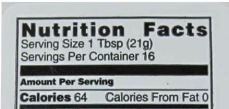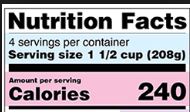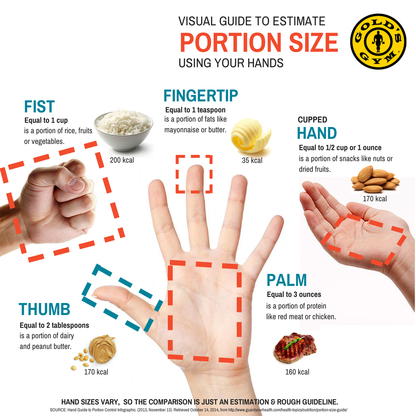We are all constantly working at bettering and improving ourselves. With an effort focused at striking more of a balance towards unleashing our full potential and preparing our bodies to achieve the goals we conceive. We often talk about gut health, optimizing the function of our gut and the gut brain axis. A key component of improving the gut is our diet. With a focus on fiber rich, protein rich, clean foods, we empower the gut to function as it was originally meant to.
Portion control and moderation help us optimize functionality and gut health. As much as we might strive to obtain portion control, it can be difficult to achieve. So, here we discuss a few tips that might make it easier for you to moderate your meals and portion sizes.
1. Use smaller plates.
Studies demonstrate that sizes of plates, bowls, cups, and spoons can subconsciously influence our portion sizes. With larger dishes, we serve a larger portion and feel that we need to “finish the food in our plates”, leading to increase in consumption. In one study, people using a large bowl ate 77% more pasta than those using a medium-sized bowl1.
By using smaller dishes, once your serving is complete, it gives you an opportunity to wait and assess hunger levels before choosing to refill or feeling full.
Leptin and Ghrelin seem to be the primary hunger regulating hormones.
Leptin is primarily secreted in fat cells as well as in the stomach and other organs. Leptin decreases hunger sensation.
Ghrelin is primarily secreted in the lining of the stomach and increases hunger sensation.
Both hormones respond to how well fed you are. Leptin can correlate with fat mass. So, the more fat you have, the more leptin your produce. However, with obesity, the balance of these two hormones can be compromised and not function well. Individuals with more fat can even develop leptin resistance. So, it becomes a vicious cycle.
- Individuals with more adipose tissue produce more leptin.
- This increases leptin resistance, so your body thinks you are starving and you end up hungrier and eating more.2
- This leads to more weight gain, increase weight and the cycle continues.
Therefore, by eating from smaller plates, and forcing yourself into smaller more frequent meals, you can encourage the body to use the stored fat for energy.
2. Ask for half the serving when eating out
Restaurants serve meals in larger dishes and have higher portion sizes. This leads to serving sizes of almost 2.5x the recommended size. 3,4
When placing your order, ask them to pack half into a carry out container. This way, you will have the correct portion in your plate and won’t be tempted to eat more or accidentally ingest more calories while socializing. You will also have leftovers for lunch the next day!
3. Drink water
Thirst and hunger signals can often be confused. If you have a recent meal and are feeling hungry again, drink more water. Hydration can help promote fullness, hydration of cells and prevent confusion of hunger and thirst.
In one study, it was found that when overweight or obese individuals drank 17 oz of water 30 minutes before a meal, they consumed 13% fewer calories without trying to make any changes.5
4. Eat slower and take smaller bites
Eating quickly makes you less aware of feeling full. If you eat slower, it will allow your stomach to signal fullness to your brain and prevent you from overeating. Your brain can take about 20 minutes to register fullness so by slowing down your meals you can allow the time to register fullness and decrease caloric intake during meals.
Additionally, avoid multitasking while eating. When eating on the go or while watching television, you do not focus on your meal, you do not enjoy your meal and you do not take the time to allow the brain to register fullness. This can also lead to overeating. 6
In Medical News Today, a study cited that when we take our first bite, the brain senses taste, quality and “it choreographs a wonderful symphony of neuronal signals that link that experience to its context, hedonic value, memories, emotions, and the other senses, to produce a coherent response,” says Charles S. Zuker, the senior author of the paper cited on this page7
So, this means that food and taste induce an emotional reaction which can lead to overeating due to indulging in the feelings associated with food. If you struggle with overeating or emotionally eating, it is worth look into your relationship with food and assessing why you may be overeating. A counselor can help you deep dive into this conversation and discuss the emotional aspect of eating that you might be struggling with.
5. Avoid eating out of larger containers
Studies have shown that those that eat out of larger containers, consume more calories regardless of taste or quality of food.
Consider measuring out proper portions and bagging them or placing them in smaller containers. When you reach for that snack, have the smaller snack size you have prepared in order to limit eating excessive calories in excess of portion sizes.
6. Address the portion distortion
Due to large portion sizes in restaurants, jumbo sized packaging and distortion of portions it can be difficult to understand what a “portion” is. In an effort to resolve portion distortion, review the nutrition label and see what the portion size is for the packaging or the food you are eating. Use measuring cups and scales to help you measure out foods.
Since you might have portion distortion, “eyeballing” your measurements can lead to you consuming more than the recommended portion and not realizing that you are overeating.
Here is a guide on reading the nutrition label:


In the two examples above, you can see that each item, respectively, has a portion size of 1 tbsp and 1 1/2 cups. This means, in the first example, 1 tbsp has 64 calories. The second one has 240 calories in 1.5 cups.
You can also use your hand as a quick reference for portion sizes

Take away point
As you consciously try to make changes and improve your gut health, lose weight and reduce your portions, it takes a conscious effort to help bring about long lasting changes. The weight loss journey is not a sprint or a short-term diet. In order to lose weight and keep it off, it is important to make sustainable lifestyle changes. This is why instead of fad diets and quick fixes, take the time to make meaningful, small changes. Smaller changes can help lead to long lasting changes in habits thus helping you both lose weight and keep it off.
References
- https://www.ncbi.nlm.nih.gov/pubmed/21982579
- https://www.precisionnutrition.com/leptin-ghrelin-weight-loss
- https://www.ncbi.nlm.nih.gov/pubmed/20470810
- https://www.ncbi.nlm.nih.gov/pubmed/16963346
- https://www.ncbi.nlm.nih.gov/pubmed/18589036
- https://www.ncbi.nlm.nih.gov/pubmed/24462489
- https://www.medicalnewstoday.com/articles/321998.php